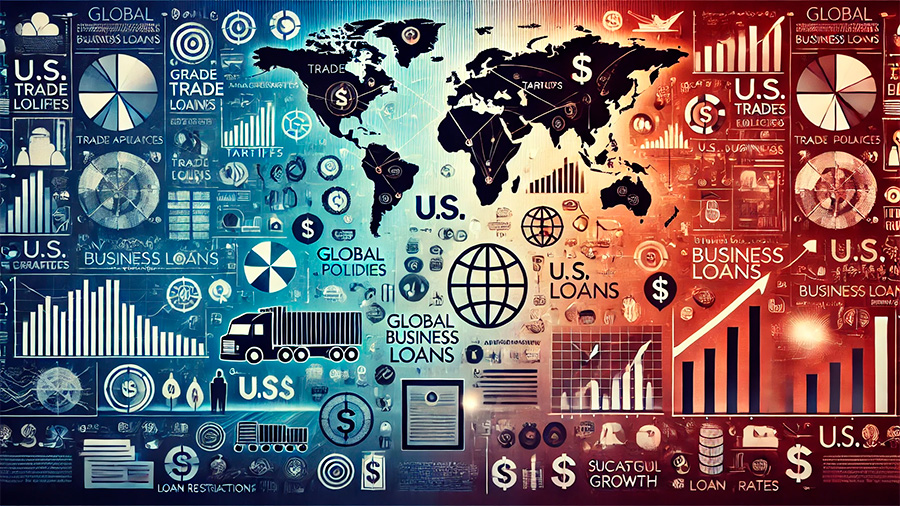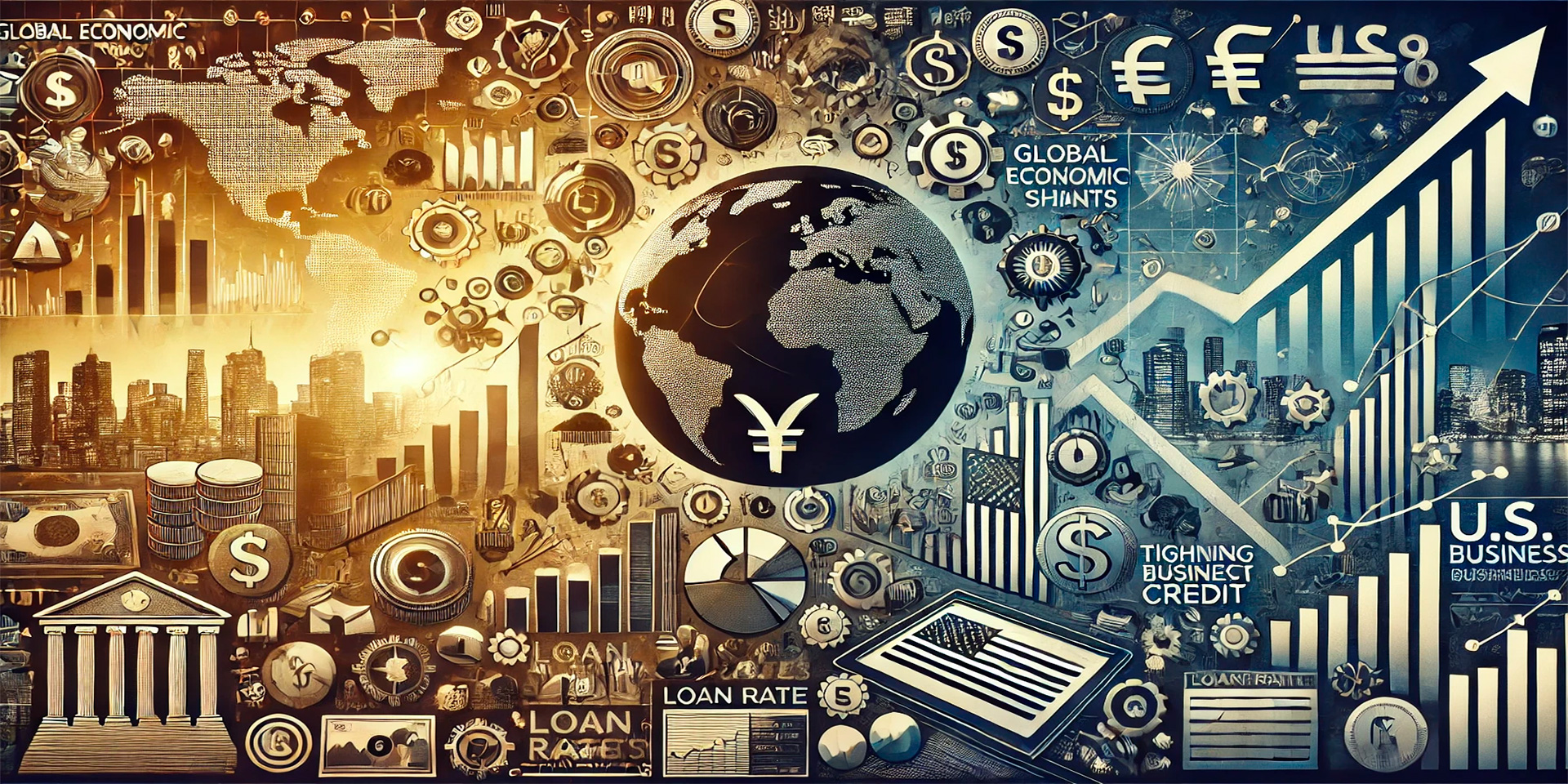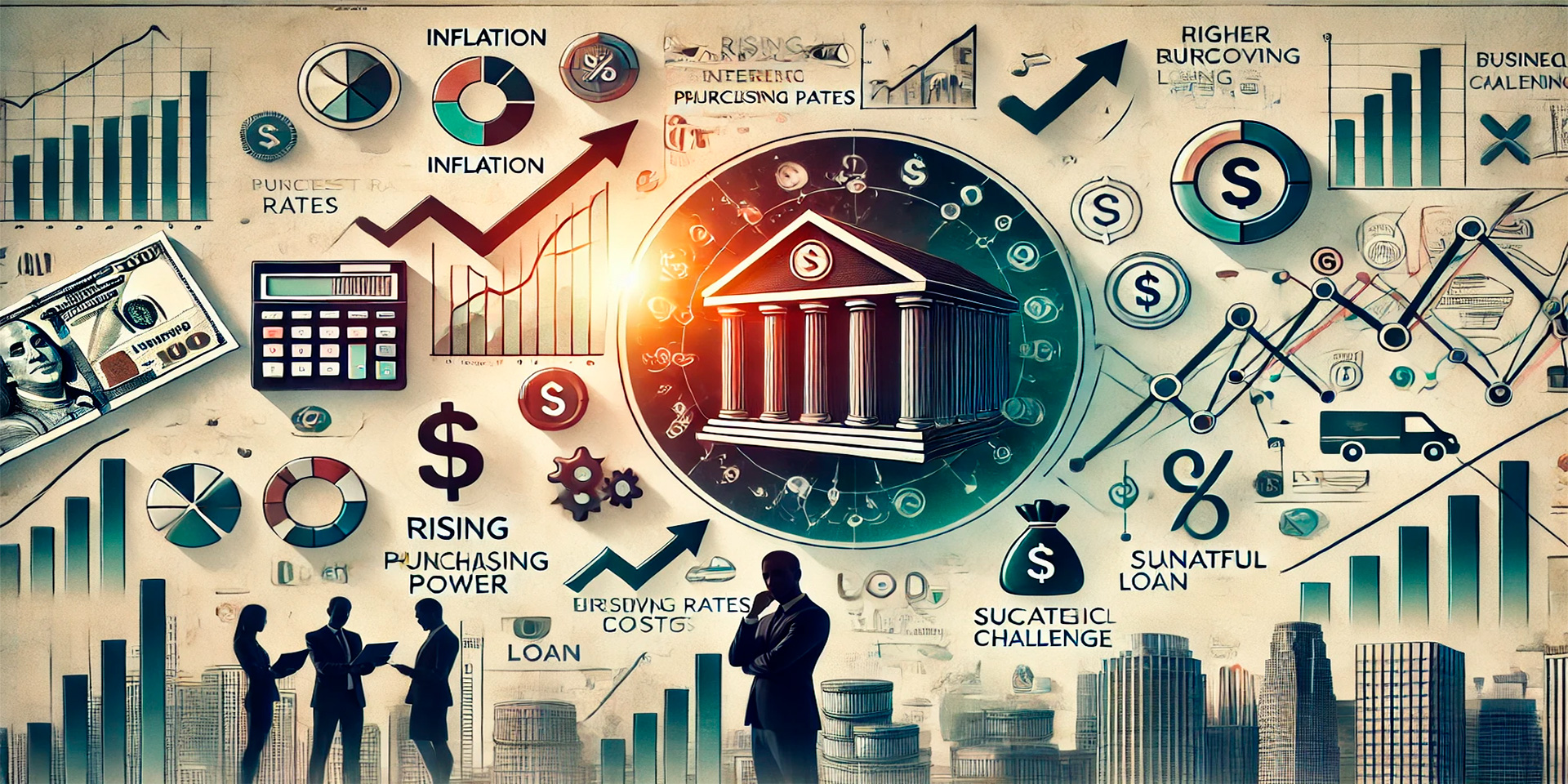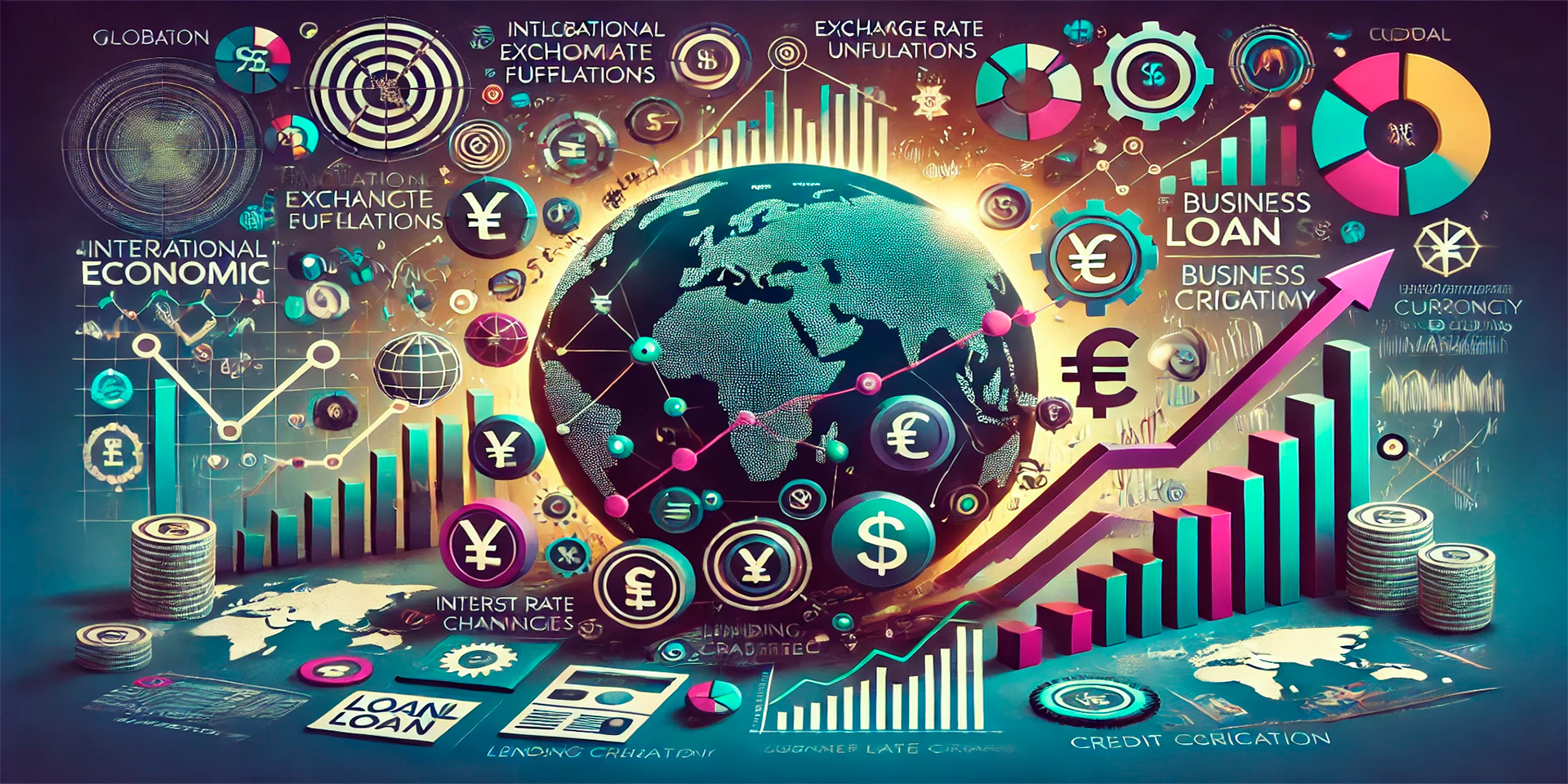Global economic shifts play a crucial role in shaping the business loan landscape in the U.S., influencing everything from interest rates to loan availability. As businesses seek financing for growth, expansion, or day-to-day operations, understanding how international events impact the loan market is essential. Economic fluctuations such as inflation, currency changes, or geopolitical instability can lead to tighter lending conditions, higher borrowing costs, or reduced access to credit.
For U.S. businesses, global economic conditions can significantly impact the ease of securing loans. Whether a company is looking to expand internationally or simply maintain operations, staying informed about international financial trends helps business owners make smarter borrowing decisions.
Global Interest Rate Changes and Their Effect on Loans
Interest rates are one of the most immediate ways global economic shifts impact U.S. business loans. Central banks around the world, including the Federal Reserve in the U.S., adjust interest rates in response to global economic conditions like inflation, recession risks, and currency fluctuations. When inflation rises globally, central banks may increase interest rates to control inflationary pressures, making borrowing more expensive for businesses.
Higher interest rates can make it more costly for businesses to take out loans, whether they are financing new projects, purchasing equipment, or expanding operations. This increase in borrowing costs affects not only new loans but also variable-rate loans, as businesses may see their monthly payments rise as a result of global interest rate hikes.
In contrast, during periods of global economic slowdown, central banks may lower interest rates to stimulate borrowing and economic activity. In such times, businesses have a more favorable borrowing environment, as lower interest rates make loans more affordable, encouraging investment and expansion.

The Role of Currency Fluctuations in Business Financing
Global economic shifts often lead to fluctuations in currency exchange rates, which can have a direct impact on U.S. businesses seeking loans, particularly those engaged in international trade. Currency depreciation in one country can lead to gains or losses for businesses depending on the currency they are borrowing or earning in.
For example, if a U.S. business takes out a loan in euros and the dollar weakens against the euro, the loan becomes more expensive to repay in dollar terms. This currency volatility adds a layer of risk to businesses that borrow in foreign currencies or have substantial international operations.
On the other hand, businesses that borrow in U.S. dollars but earn revenue in stronger foreign currencies might benefit from these fluctuations. When exchange rates are favorable, the cost of borrowing in the U.S. dollar decreases, allowing these businesses to manage loan repayments more effectively.
Monitoring global currency trends allows businesses to anticipate changes in their borrowing costs and consider hedging strategies to reduce risk in a volatile currency market.
Geopolitical Instability and Its Effect on Loan Markets
Geopolitical instability—such as conflicts, political upheaval, or changes in trade policies—can also have a profound impact on U.S. businesses seeking loans. During periods of geopolitical uncertainty, lenders may become more conservative, tightening their lending criteria to mitigate risks associated with global instability. This can lead to reduced loan availability or higher interest rates for businesses.
For example, trade tensions between major economies can disrupt global supply chains, leading to increased costs for businesses that rely on imported goods. As a result, businesses may face cash flow challenges that affect their ability to meet loan obligations. Lenders, recognizing these risks, may impose stricter requirements on businesses operating in sectors vulnerable to global trade disruptions.
Moreover, businesses that rely heavily on international customers may see a decline in revenue during times of geopolitical uncertainty, further complicating their ability to secure loans. This environment requires businesses to take proactive steps to mitigate risk, such as diversifying their customer base or exploring alternative financing options.

How Global Trade Policies Affect U.S. Business Loans
Changes in global trade policies and tariffs can directly impact U.S. businesses’ ability to borrow. When trade barriers are imposed or removed, it can affect the profitability and stability of industries dependent on international commerce. For instance, a new tariff on imported materials might increase operational costs for manufacturers, leading to reduced cash flow and difficulties repaying loans.
Lenders are likely to consider these risks when evaluating loan applications. Businesses that are directly impacted by global trade shifts may face tighter lending conditions or higher interest rates due to the increased risk perceived by lenders.
Additionally, shifts in global trade agreements can open new markets or restrict access to existing ones, which in turn affects a business’s revenue potential. Understanding how these global changes can influence your industry and loan market helps businesses make better borrowing decisions and adjust their financial strategies accordingly.
The Ripple Effect of Global Recessions on U.S. Loan Markets
Global recessions can significantly affect U.S. loan markets by reducing overall economic activity and making lenders more risk-averse. When global economic growth slows, U.S. businesses may face reduced demand for their products and services, limiting their ability to generate the revenue needed to repay loans.
During global recessions, lenders may tighten credit conditions by raising interest rates, shortening repayment terms, or increasing collateral requirements. This makes it harder for businesses, particularly small and medium-sized enterprises (SMEs), to secure the financing they need for expansion, inventory, or operational needs.
To navigate these challenging times, businesses must maintain strong financial health, reduce unnecessary expenses, and focus on preserving cash flow. By demonstrating financial resilience, businesses can increase their chances of securing favorable loan terms even during periods of global economic instability.
Adapting to Global Economic Shifts
While U.S. businesses cannot control global economic events, they can take steps to adapt to these shifts and mitigate their impact on loan access and borrowing costs. One of the most effective strategies is maintaining a strong credit profile. Businesses with healthy cash flow, consistent revenue, and low debt levels are more likely to secure loans even when global economic conditions tighten.
Diversifying financing sources is another key strategy. By exploring options such as government-backed loans, private equity, or venture capital, businesses can reduce their reliance on traditional bank loans and increase their financial resilience during periods of global economic uncertainty.
Businesses should also consider hedging strategies to protect against currency fluctuations and stay informed about global trade developments that may impact their industry. By staying proactive and agile, U.S. businesses can navigate global economic shifts while maintaining access to the financing they need for growth.
Conclusion
Global economic shifts have a direct impact on U.S. businesses seeking loans, affecting everything from interest rates and currency fluctuations to trade policies and geopolitical risks. By understanding how these international factors influence the loan market, businesses can make informed borrowing decisions, adapt to changing conditions, and secure the financing needed to thrive in a complex global economy.




